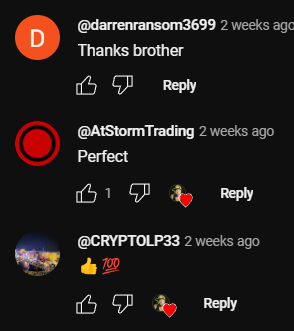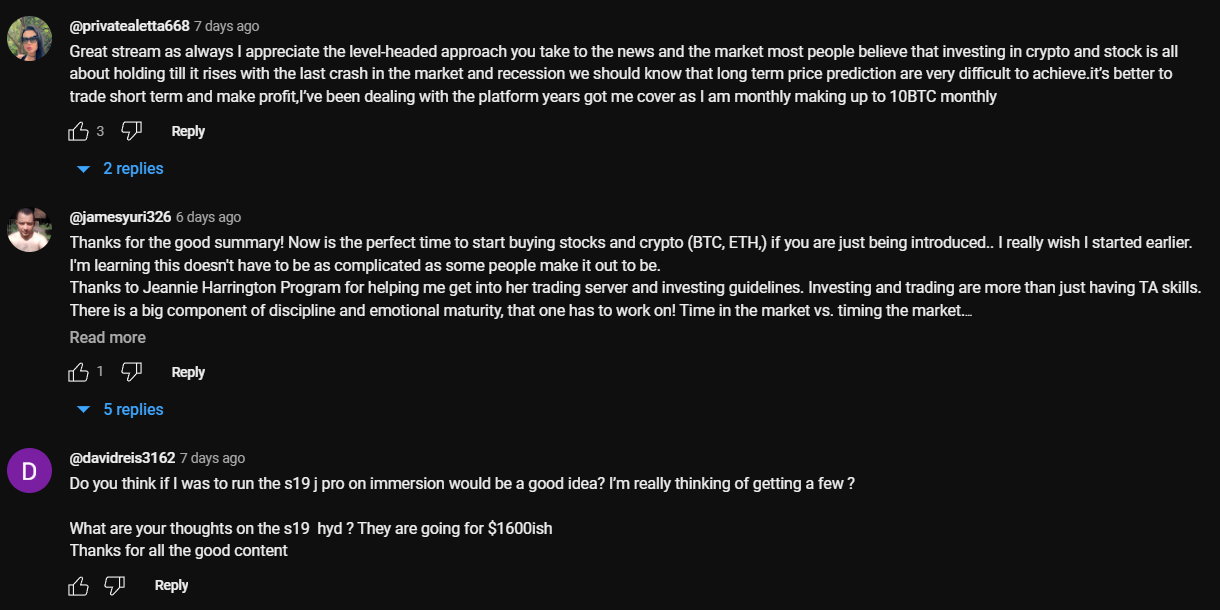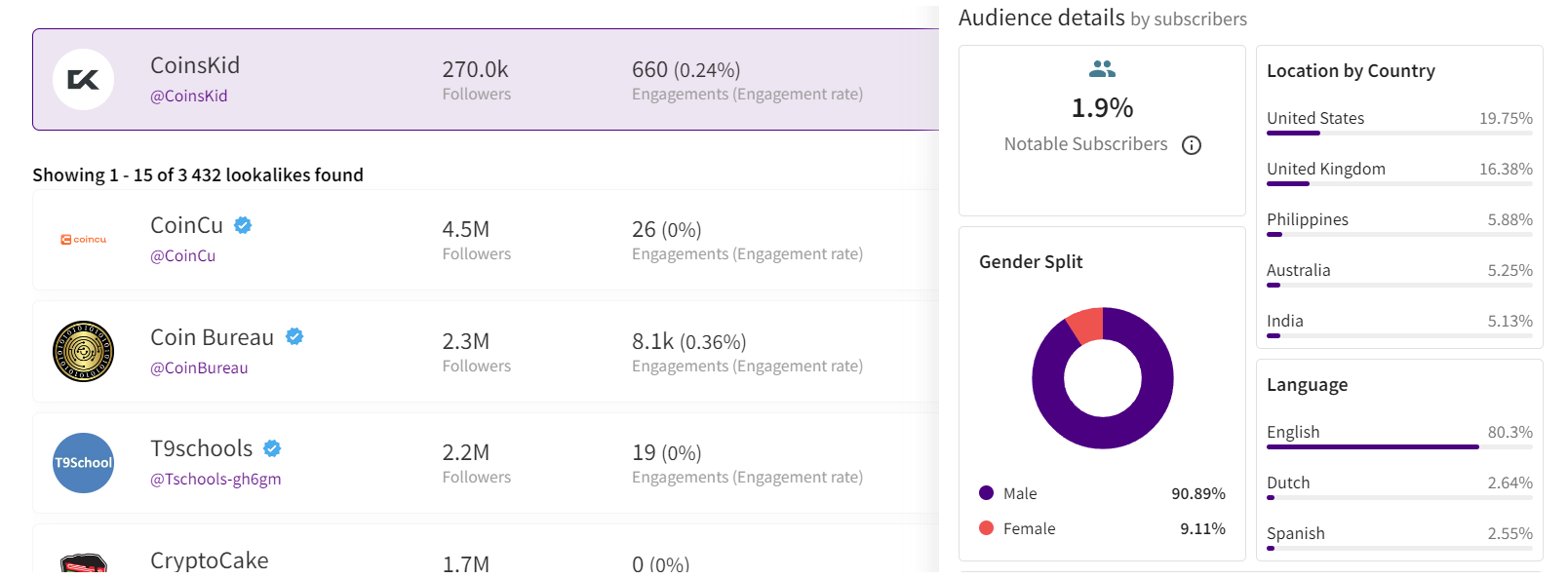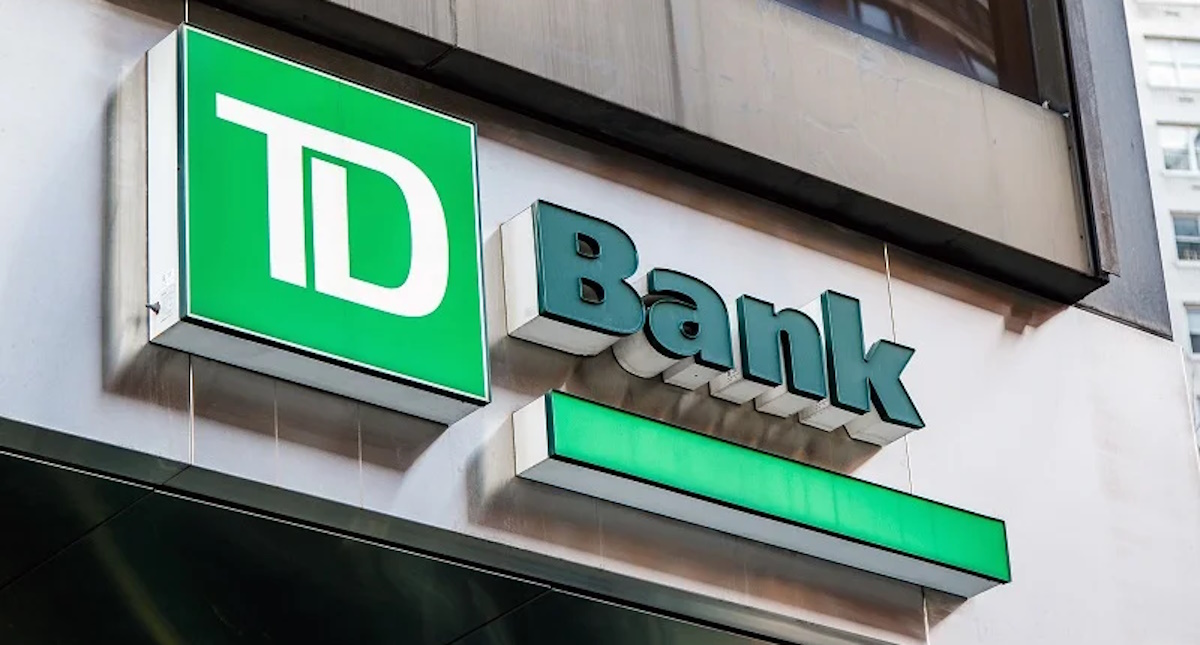Fintech
Mosaic Capital Corporation Reports Q1 2020 Financial Results

Calgary, Alberta–(Newsfile Corp. – May 6, 2020) – Mosaic Capital Corporation (TSXV: M) (TSXV: M.DB) (“Mosaic” or the “Company“) has released its unaudited consolidated financial results for the three months ended March 31, 2020. The Company’s financial statements and management’s discussion and analysis (“MD&A“) for the period ended March 31, 2020 can be accessed under Mosaic’s profile on SEDAR at www.sedar.com and on the Company’s website at www.mosaiccapitalcorp.com.
Selected Financial Highlights
| Three months ended March 31, | |||||||||
| (in $000s, except as noted) | 2020 | 2019 | % Change | ||||||
| CONTINUING OPERATIONS | |||||||||
| Revenue | $ | 78,516 | $ | 84,732 | -7% | ||||
| Adjusted EBITDA (1) | $ | 5,677 | $ | 6,420 | -12% | ||||
| Net income (loss) and comprehensive income (loss) | $ | 3,649 | $ | (3,521 | ) | 204% | |||
| Free Cash Flow (1) | $ | 502 | $ | 1,370 | -63% | ||||
| DISCONTINUED OPERATIONS | |||||||||
| Revenue | $ | – | $ | 11,381 | NA | ||||
| Adjusted EBITDA (1) | $ | – | $ | 799 | NA | ||||
| Net income and comprehensive income | $ | – | $ | 429 | NA | ||||
| Free Cash Flow (1) | $ | – | $ | 360 | NA | ||||
| AGGREGATE | |||||||||
| Revenue | $ | 78,516 | $ | 96,113 | -18% | ||||
| Adjusted EBITDA (1) | $ | 5,677 | $ | 7,219 | -21% | ||||
| per share | $ | 0.53 | $ | 0.68 | -21% | ||||
| as a % of revenue | 7.23% | 7.51% | |||||||
| Net income (loss) and comprehensive income (loss) | $ | 3,649 | $ | (3,092 | ) | 218% | |||
| Net income (loss) attributable to equity holders | $ | 1,257 | $ | (4,891 | ) | 126% | |||
| Free Cash Flow (1) | $ | 502 | $ | 1,731 | -71% | ||||
| per share | $ | 0.05 | $ | 0.16 | -71% | ||||
| Preferred securities distributions declared | $ | 1,496 | $ | 1,479 | 1% | ||||
| Common share dividends declared | $ | 1,116 | $ | 1,115 | – | ||||
| per share | $ | 0.105 | $ | 0.105 | – | ||||
| TTM Preferred Distribution Payout Ratio (1) | 42% | 45% | -7% | ||||||
| TTM Combined Payout Ratio (1) | 73% | 78% | -7% | ||||||
| Weighted avg. common shares outstanding | 10,621,420 | 10,608,058 | – | ||||||
Note:
(1) Adjusted EBITDA, Free Cash Flow, Trailing twelve-month (“TTM“) Preferred Distribution Payout Ratio and TTM Combined Payout Ratio are not a recognized measure under IFRS. Refer to “Non-GAAP Measures”.
For the three-month period ended and as at March 31, 2020, Mosaic:
-
generated $78.5 million in revenue from continuing operations which, while 7% below last year’s record setting level, represents the Company’s second highest first quarter performance;
-
generated Adjusted EBITDA from continuing operations of $5.7 million which, while 12% below last year’s record setting level, represents the Company’s second highest first quarter performance;
-
reduced corporate overhead costs by 11% over the same period in 2019;
-
provided dividends of $1.1 million to our shareholders;
-
posted a trailing twelve-month Combined Payout Ratio of 73%, which represents an improvement from 78% as at March 31, 2019; and
-
maintained a healthy balance sheet with $30.1 million in cash, $47.3 million in working capital and Total Debt to Gross EBITDA leverage of 1.13.
Subsequent to March 31, 2020, Mosaic:
- provided an operational update on April 8, 2020 that outlined the Company’s two-pronged approach to manage liquidity amid the economic uncertainty caused by the on-going COVID-19 pandemic (the “Pandemic“). This approach incorporated the suspension of common share dividends and the engagement with the Company’s lenders and financial partners regarding options to enhance near term liquidity. Additionally, as part of this engagement, the Company is negotiating revised terms with its lenders so that it has the necessary headroom in its financial covenants to operate through the uncertain future business environment.
Segmented Financial Performance
| Three months ended March 31, | |||||||||
| (in $000s, except as noted) | 2020 | 2019 | % Change | ||||||
| Revenue: | |||||||||
| Infrastructure | $ | 47,968 | $ | 55,135 | -13% | ||||
| Diversified | 27,667 | 25,895 | 7% | ||||||
| Energy | 2,881 | 3,702 | -22% | ||||||
| Corporate | – | – | – | ||||||
| Total revenue | $ | 78,516 | $ | 84,732 | -7% | ||||
| Adjusted EBITDA: (1) | |||||||||
| Infrastructure | $ | 3,340 | $ | 3,592 | -7% | ||||
| Diversified | 3,241 | 3,691 | -12% | ||||||
| Energy | 301 | 498 | -40% | ||||||
| Corporate | (1,205 | ) | (1,361 | ) | 11% | ||||
| Total adjusted EBITDA | $ | 5,677 | $ | 6,420 | -12% | ||||
| as a % of revenue | 7.23% | 7.58% | |||||||
Note:
(1) Adjusted EBITDA is defined as earnings before finance costs, taxes, depreciation and amortization, and other non-cash items. Adjusted EBITDA is not a recognized measure under IFRS. Refer to “Non-GAAP Measures”.
Outlook
Management is pleased with the Company’s first quarter 2020 financial and operating results that met budgeted expectations despite being negatively impacted by the Pandemic related influences in the final weeks of the quarter. In reaction to this challenge, Mosaic acted swiftly to reduce cost structures in each of its operating subsidiaries and at the corporate level that resulted in only a modest decline in profitability levels over the same period last year.
Progressing through the second quarter of 2020, the negative impacts of the Pandemic have increased, including the deferral of some project-related business opportunities, coordinated supply chain related production delays and a general moderation of activity-levels at certain of Mosaic’s operating subsidiaries. In addition, certain of the Company’s subsidiaries are also dealing with the significant decline in oil prices and flooding in Fort McMurray, Alberta, which may have a material impact on their operations. Partially offsetting these negative influences, Mosaic is experiencing areas of stability in certain subsidiary operations that operate in more rural, industrial-based settings. Management has acted swiftly to reduce cost structures, cut non-essential spending and maximize working capital efficiencies across the portfolio. Additionally, the Company believes it is eligible for certain of the Government’s financial assistance programs which are expected to offset some of the negative financial impacts of the Pandemic and is currently working through eligibility, timing and magnitude of the various programs.
Mark Gardhouse, President and CEO commented “Mosaic’s strong first quarter results, a healthy balance sheet and our focused operational approach has favourably positioned the Company as we enter a period of economic uncertainty. I am confident that we have instituted the appropriate strategies to successfully manage through this period of uncertainty. Additionally, with the support we expect to be provided by our lenders and financial partners, I believe Mosaic will be well positioned to capture incrementally attractive investment opportunities when conditions to transact are suitable.”
Mosaic’s growth strategy is centered on the acquisition of controlling equity interests in new portfolio companies with a specific focus on growing Free Cash Flow per share while maintaining a strong balance sheet. Supplementing this, Mosaic’s management team adds value with strong operational and strategic focus by actively engaging with its portfolio companies to improve results and capture growth opportunities.
Mosaic’s pipeline of high quality acquisition opportunities remains solid and the Company will continue to pursue its strategy to grow through acquisitions with a focus on building an increasingly diversified portfolio of private, mid-market companies that offer strong free cash flow while maintaining a healthy balance sheet. While the Pandemic has resulted in extended timelines for due diligence and negotiations, the Company remains active in its pursuit of new acquisition opportunities.
Conference Call
Management will hold a conference call to discuss first quarter 2020 results on Thursday, May 7th, 2020 at 10:00 AM ET. All interested parties are invited to join the conference call by dialing 1-800-952-5114 from within Canada or the U.S., then entering the participant Code 8147363#. Participants will need to provide the operator with the Service Confirmation number 4326428. A recording of the conference call will be made available on Mosaic’s website at www.mosaiccapitalcorp.com.
ABOUT MOSAIC CAPITAL CORPORATION
Mosaic is a Canadian investment company that owns a portfolio of established businesses which span a diverse range of industries and geographies. Mosaic’s strategy is to create long-term value for its shareholders through accretive acquisitions, long-term portfolio ownership, sustained cash flows and organic portfolio growth. Mosaic achieves its objectives by maintaining financial discipline, acquiring businesses at attractive valuations, performing extensive acquisition due diligence, utilizing optimal transaction structuring and working closely with subsidiary businesses after acquisition.
FOR FURTHER INFORMATION PLEASE CONTACT:
Cam Deller
Vice President, Corporate Development
Mosaic Capital Corporation
400, 2424 – 4th Street SW
Calgary, AB T2S 2T4
T: (403) 930-6576
E: [email protected]
Reader Advisory
Non-GAAP Measures
Selected financial information for the three-month period ended March 31, 2020 are set out above and includes the following measures that are not recognized under International Financial Reporting Standards (“IFRS“) and are non-generally accepted accounting principles (“Non-GAAP“) measures: Adjusted EBITDA, Free Cash Flow, Preferred Distribution Payout Ratio and Combined Payout Ratio. This information should be read in conjunction with the unaudited condensed interim consolidated financial statements for the three months ended March 31, 2020 and 2019 and Mosaic’s MD&A for the period ended March 31, 2020 available under Mosaic’s profile on SEDAR at www.sedar.com. Further information regarding these Non-GAAP measures is contained in Mosaic’s MD&A.
Forward-Looking Statements
This news release contains forward-looking information and statements within the meaning of applicable Canadian securities laws (herein referred to as “forward-looking statements“) that involve known and unknown risks, uncertainties and other factors that may cause actual results, performance or achievements to be materially different from any future results, performance or achievements expressed or implied by such forward-looking statements. All information and statements in this press release which are not statements of historical fact may be forward-looking statements. The words “believe”, “expect”, “intend”, “estimate”, “anticipate”, “project”, “scheduled”, and similar expressions, as well as future or conditional verbs such as “will”, “should”, “would”, and “could” often identify forward-looking statements. Forward-looking statements included in this news release include, but are not limited to:
- the Company’s ability to manage the impact of COVID-19 and its impact on operations;
- the Company’s lenders agreeing to revising terms of the loans & borrowings on a basis acceptable to the Company;
- the Company’s eligibility for government financial assistance programs;
- the overall business strategy and objectives of Mosaic;
- the Company’s expectation to successfully manage the current business environment; and
- the Company’s expectation to be positioned to capture attractive investment opportunities in the future.
Such statements or information, if any, are only predictions and reflect the current beliefs of management with respect to future events and are based on information currently available to management. Actual results and events may differ materially from those contemplated by these forward-looking statements due to these statements being subject to a number of risks and uncertainties. Undue reliance should not be placed on these forward-looking statements as there can be no assurance that the plans, intentions or expectations upon which they are based will occur.
By their nature forward-looking statements involve assumptions and known and unknown risks and uncertainties, both general and specific, that contribute to the possibility that the predictions, forecasts, projections and other things contemplated by the forward-looking statements will not occur. A number of factors could cause actual results to differ materially from the results stated in the forward-looking statements, including, but not limited to, risks related to: COVID-19 impact, general economic and business conditions; the failure to realize the anticipated benefits of Mosaic’s recent and future acquisitions; adverse fluctuations in commodity prices; competition for, among other things, capital, equipment and skilled personnel; the inability to generate sufficient cash flow from operations to meet current and future obligations; the inability to obtain required debt and/or equity capital on suitable terms; competition for acquisition targets; adverse weather conditions; seasonality and fluctuations in results; and limited diversification of Mosaic’s subsidiaries. Should any of the risks or uncertainties facing Mosaic and its subsidiaries materialize, or should assumptions underlying the forward-looking statements prove incorrect, actual results, performance, activities or achievements could vary materially from those expressed or implied by any forward-looking statements contained in this news release.
Although Mosaic believes that the expectations represented by any forward-looking-statements contained herein are reasonable based on the information available to them on the date of this news release, management cannot assure investors that actual results, performance or achievements will be consistent with these forward-looking statements. Any forward-looking statements herein contained are made as of the date of this press release and Mosaic does not assume any obligation to update or revise them to reflect new information, events or circumstances, except as required by law.
Neither the TSX Venture Exchange nor its Regulation Services Provider (as that term is defined in policies of the TSX Venture Exchange) accepts responsibility for the adequacy or accuracy of this release.
To view the source version of this press release, please visit https://www.newsfilecorp.com/release/55471
Fintech
How to identify authenticity in crypto influencer channels

Modern brands stake on influencer marketing, with 76% of users making a purchase after seeing a product on social media.The cryptocurrency industry is no exception to this trend. However, promoting crypto products through influencer marketing can be particularly challenging. Crypto influencers pose a significant risk to a brand’s reputation and ROI due to rampant scams. Approximately 80% of channels provide fake statistics, including followers counts and engagement metrics. Additionally, this niche is characterized by high CPMs, which can increase the risk of financial loss for brands.
In this article Nadia Bubennnikova, Head of agency Famesters, will explore the most important things to look for in crypto channels to find the perfect match for influencer marketing collaborations.
-
Comments
There are several levels related to this point.
LEVEL 1
Analyze approximately 10 of the channel’s latest videos, looking through the comments to ensure they are not purchased from dubious sources. For example, such comments as “Yes sir, great video!”; “Thanks!”; “Love you man!”; “Quality content”, and others most certainly are bot-generated and should be avoided.
Just to compare:


LEVEL 2
Don’t rush to conclude that you’ve discovered the perfect crypto channel just because you’ve come across some logical comments that align with the video’s topic. This may seem controversial, but it’s important to dive deeper. When you encounter a channel with logical comments, ensure that they are unique and not duplicated under the description box. Some creators are smarter than just buying comments from the first link that Google shows you when you search “buy YouTube comments”. They generate topics, provide multiple examples, or upload lists of examples, all produced by AI. You can either manually review the comments or use a script to parse all the YouTube comments into an Excel file. Then, add a formula to highlight any duplicates.

LEVEL 3
It is also a must to check the names of the profiles that leave the comments: most of the bot-generated comments are easy to track: they will all have the usernames made of random symbols and numbers, random first and last name combinations, “Habibi”, etc. No profile pictures on all comments is also a red flag.
LEVEL 4
Another important factor to consider when assessing comment authenticity is the posting date. If all the comments were posted on the same day, it’s likely that the traffic was purchased.
2. Average views number per video
This is indeed one of the key metrics to consider when selecting an influencer for collaboration, regardless of the product type. What specific factors should we focus on?
First & foremost: the views dynamics on the channel. The most desirable type of YouTube channel in terms of views is one that maintains stable viewership across all of its videos. This stability serves as proof of an active and loyal audience genuinely interested in the creator’s content, unlike channels where views vary significantly from one video to another.
Many unauthentic crypto channels not only buy YouTube comments but also invest in increasing video views to create the impression of stability. So, what exactly should we look at in terms of views? Firstly, calculate the average number of views based on the ten latest videos. Then, compare this figure to the views of the most recent videos posted within the past week. If you notice that these new videos have nearly the same number of views as those posted a month or two ago, it’s a clear red flag. Typically, a YouTube channel experiences lower views on new videos, with the number increasing organically each day as the audience engages with the content. If you see a video posted just three days ago already garnering 30k views, matching the total views of older videos, it’s a sign of fraudulent traffic purchased to create the illusion of view stability.
3. Influencer’s channel statistics
The primary statistics of interest are region and demographic split, and sometimes the device types of the viewers.
LEVEL 1
When reviewing the shared statistics, the first step is to request a video screencast instead of a simple screenshot. This is because it takes more time to organically edit a video than a screenshot, making it harder to manipulate the statistics. If the creator refuses, step two (if only screenshots are provided) is to download them and check the file’s properties on your computer. Look for details such as whether it was created with Adobe Photoshop or the color profile, typically Adobe RGB, to determine if the screenshot has been edited.
LEVEL 2
After confirming the authenticity of the stats screenshot, it’s crucial to analyze the data. For instance, if you’re examining a channel conducted in Spanish with all videos filmed in the same language, it would raise concerns to find a significant audience from countries like India or Turkey. This discrepancy, where the audience doesn’t align with regions known for speaking the language, is a red flag.
If we’re considering an English-language crypto channel, it typically suggests an international audience, as English’s global use for quality educational content on niche topics like crypto. However, certain considerations apply. For instance, if an English-speaking channel shows a significant percentage of Polish viewers (15% to 30%) without any mention of the Polish language, it could indicate fake followers and views. However, if the channel’s creator is Polish, occasionally posts videos in Polish alongside English, and receives Polish comments, it’s important not to rush to conclusions.
 Example of statistics
Example of statistics
Wrapping up
These are the main factors to consider when selecting an influencer to promote your crypto product. Once you’ve launched the campaign, there are also some markers to show which creators did bring the authentic traffic and which used some tools to create the illusion of an active and engaged audience. While this may seem obvious, it’s still worth mentioning. After the video is posted, allow 5-7 days for it to accumulate a basic number of views, then check performance metrics such as views, clicks, click-through rate (CTR), signups, and conversion rate (CR) from clicks to signups.
If you overlooked some red flags when selecting crypto channels for your launch, you might find the following outcomes: channels with high views numbers and high CTRs, demonstrating the real interest of the audience, yet with remarkably low conversion rates. In the worst-case scenario, you might witness thousands of clicks resulting in zero to just a few signups. While this might suggest technical issues in other industries, in crypto campaigns it indicates that the creator engaged in the campaign not only bought fake views and comments but also link clicks. And this happens more often than you may realize.
Summing up, choosing the right crypto creator to promote your product is indeed a tricky job that requires a lot of resources to be put into the search process.

Author
Nadia Bubennikova, Head of agency at Famesters
Fintech
Central banks and the FinTech sector unite to change global payments space

The BIS, along with seven leading central banks and a cohort of private financial firms, has embarked on an ambitious venture known as Project Agorá.
Named after the Greek word for “marketplace,” this initiative stands at the forefront of exploring the potential of tokenisation to significantly enhance the operational efficiency of the monetary system worldwide.
Central to this pioneering project are the Bank of France (on behalf of the Eurosystem), the Bank of Japan, the Bank of Korea, the Bank of Mexico, the Swiss National Bank, the Bank of England, and the Federal Reserve Bank of New York. These institutions have joined forces under the banner of Project Agorá, in partnership with an extensive assembly of private financial entities convened by the Institute of International Finance (IIF).
At the heart of Project Agorá is the pursuit of integrating tokenised commercial bank deposits with tokenised wholesale central bank money within a unified, public-private programmable financial platform. By harnessing the advanced capabilities of smart contracts and programmability, the project aspires to unlock new transactional possibilities that were previously infeasible or impractical, thereby fostering novel opportunities that could benefit businesses and consumers alike.
The collaborative effort seeks to address and surmount a variety of structural inefficiencies that currently plague cross-border payments. These challenges include disparate legal, regulatory, and technical standards; varying operating hours and time zones; and the heightened complexity associated with conducting financial integrity checks (such as anti-money laundering and customer verification procedures), which are often redundantly executed across multiple stages of a single transaction due to the involvement of several intermediaries.
As a beacon of experimental and exploratory projects, the BIS Innovation Hub is committed to delivering public goods to the global central banking community through initiatives like Project Agorá. In line with this mission, the BIS will soon issue a call for expressions of interest from private financial institutions eager to contribute to this ground-breaking project. The IIF will facilitate the involvement of private sector participants, extending an invitation to regulated financial institutions representing each of the seven aforementioned currencies to partake in this transformative endeavour.
Source: fintech.globa
The post Central banks and the FinTech sector unite to change global payments space appeared first on HIPTHER Alerts.
Fintech
TD Bank inks multi-year strategic partnership with Google Cloud

TD Bank has inked a multi-year deal with Google Cloud as it looks to streamline the development and deployment of new products and services.
The deal will see the Canadian banking group integrate the vendor’s cloud services into a wider portion of its technology solutions portfolio, a move which TD expects will enable it “to respond quickly to changing customer expectations by rolling out new features, updates, or entirely new financial products at an accelerated pace”.
This marks an expansion of the already established relationship between TD Bank and Google Cloud after the group previously adopted the vendor’s Google Kubernetes Engine (GKE) for TD Securities Automated Trading (TDSAT), the Chicago-based subsidiary of its investment banking unit, TD Securities.
TDSAT uses GKE for process automation and quantitative modelling across fixed income markets, resulting in the development of a “data-driven research platform” capable of processing large research workloads in trading.
Dan Bosman, SVP and CIO of TD Securities, claims the infrastructure has so far supported TDSAT with “compute-intensive quantitative analysis” while expanding the subsidiary’s “trading volumes and portfolio size”.
TD’s new partnership with Google Cloud will see the group attempt to replicate the same level of success across its entire portfolio.
Source: fintechfutures.com
The post TD Bank inks multi-year strategic partnership with Google Cloud appeared first on HIPTHER Alerts.
-
Latest News7 days ago
HSBC-backed fintech Monese is considering splitting its operations as it grapples with increasing losses.
-
Latest News6 days ago
EverBank has announced a groundbreaking partnership with Finzly, poised to revolutionize payment processing.
-
Latest News6 days ago
FinTech leaders express caution regarding the promises made in #Budget2024 concerning open banking, stating that the “devil is in the details.”
-
Latest News6 days ago
Gotion High-tech’s operating profit up 391% in 2023, nearly RMB 2.8 billion invested in R&D for the year
-
Latest News6 days ago
Aurionpro Solutions acquires Arya.ai, to power next generation Enterprise AI platforms for Financial Institutions
-
Latest News7 days ago
Wells Fargo, a leading financial institution, is set to revolutionize its trade finance operations by incorporating artificial intelligence (AI) technology through its collaboration with TradeSun.
-
Latest News6 days ago
Latvian Fintech inGain Raises €650,000 for No-Code SaaS Loan Management System
-
Latest News6 days ago
Credit card fintech Pliant lands €18m Series A extension led by PayPal Ventures



